The most productive varieties of cucumbers: which is better to grow outdoors
Cucumbers are grown in our country for a very long time, and breeding work over many centuries has made it possible to breed dozens of varieties that differ not only in yield and fruit ripening time, but also in many other properties. Some of them are more suitable for greenhouse cultivation, and some are originally intended for planting in beds. How to choose the most productive varieties of cucumbers for open ground?
Content:
- Cucumber varieties: types and groups
- Harvest varieties for open ground
- Secrets of a good harvest of cucumbers
Cucumber varieties: types and groups
Experienced gardeners know that cucumbers are similar only in appearance, but the pulp of different varieties of fruits is completely different. They can be more or less watery, some of them are much more suitable for various canning options, rather than for eating fresh.
All cucumber varieties can be divided into several groups:
- Salting varieties. As the name implies, they are grown specifically for salting, so they may not seem very tasty when fresh. Usually the fruits are small to medium in size, their flesh is very dense, and the skin is thin. This allows them to quickly pass the brine and acquire the desired taste. At the same time, the pulp absorbs the aromas of seasonings well, and with proper salting, the taste is bright and rich.
- Canned varieties intended for pickling in cans. The fruits are also small in size, while they can be curved. Their flesh is quite dense, and the peel is thin, in many respects they are similar to salting.
- Salad varieties - cucumbers, intended to be eaten fresh. It is in this group that the most productive varieties are included, and their fruits can be really huge in size. Due to the very hard peel for pickling, it is undesirable to use them, since the pulp may turn out to be flabby and will not acquire the desired taste.
In gardening magazines, you can also find the division into "Blackthorn" and "Whitethorn" varieties according to the color of the pimples on the fruits. It is the white-thorn varieties that are intended to be eaten fresh, and the black-thorn varieties are considered only pickled and canned.
Cucumber varieties are also divided into greenhouse and ground ones.
Common varieties of cucumbers for open ground rarely give high harvests, since they are usually not grown for sale, but for home use. Greenhouse varieties allow you to get a large number of fruits in a limited area, in addition, harvest they can give not only in summer, but also in winter, subject to certain conditions.
There are also dozens of hybrid varieties with combined properties. Most hybrids prove to be more hardy than the progenitor varieties and are suitable for greenhouse cultivation as well as outdoor conditions.
Harvest varieties for open ground
If you start growing cucumbers in the open field, you can start experimenting with the most common varieties, mainly local ones. Long-term selection has already adapted them to local conditions, so it will be much easier to care for them than for all kinds of exotic.This is especially important for the northern regions: local varieties will be able to grow in almost any conditions, but the southern ones very poorly adapt to a more severe climate.
To obtain a large harvest of cucumbers in central Russia, you can use the following varieties:
- Super early hybrid variety Sparta F1, begins to bear fruit much earlier than others. The plant is pollinated by bees, with regular pollination it is able to bear fruit during the entire growing season. The length of the cucumbers is about 9-11 cm, thanks to their thin skin and strong crunchy flesh, they will be delicious fresh and are perfect for pickling.
- Zozulya F1 is the most favorite varieties of gardeners, which has received wide recognition precisely due to the high yield... He is one of the early maturing, from time to landing before fruiting, the plant will need no more than 45-50 days. You can grow it as in conditions greenhouse or greenhouses, and in the open field, since pollination by insects is not necessary to obtain fruits. With a normal planting density from one meter of the garden area, you can eventually get up to 40 kg of fruit.
- The Grade Yischechny is one of the early maturing and cold-resistant varieties, it is ideal for open ground in the middle lane. It got its name because of the small size of the fruits - they do not grow more than 10 cm in length.The first crop is removed from the plants after 40 days from the moment of planting, about 7 kg of cucumbers are obtained from a square meter of the sown area. The fruits are used primarily for canning.
- Pinocchio is a variety designed specifically for open ground. It is early maturing, the fruits can already be removed 44 days after planting. One of the main advantages of the variety is resistance to cold and transportability, the fruits will be well stored for a long time. The variety itself can be attributed to the number of salad.
- Muromsky 36 is an early ripe variety with a fruit length of up to 14 cm, it is suitable for growing cucumbers in a vegetable garden, as it is pollinated by insects. The fruits are not very well stored and quickly begin to turn yellow, but they are great for pickling and some canning options.
These are just some of the varieties that are suitable for the garden in order to get a rich harvest. Many gardeners are self-breeding.
Seeds after a successful harvest, it can be used for planting the next year, for this the largest and healthiest fruits are selected.
To choose a good variety, you need to study all its properties and determine if it is suitable for a given climate.
Secrets of a good harvest of cucumbers
Any cucumber - a thermophilic and light-loving plant, demanding on moisture. Insufficient watering can leave you without a crop at all, whichever variety you choose.
There should be enough light, but some varieties grow well in partial shade, and it is easier for them to find a suitable place.
Essential for really good harvest - correct crop rotation: cucumbers cannot be constantly planted in the same place, it is better if they become predecessors tomatoes or cabbage.
You can name the basic rules for growing cucumbers:
- Almost any type of soil is suitable for cucumbers, but they will need regular feeding about once every two weeks. During the fruiting period, it is necessary fertilizer high in potassium and nitrogen, mineral fertilizer can be combined with divorced mullein or with bird droppings
- The main planting period is mid-April, early May. By this time, the soil is already warming up to a temperature of 10 degrees, so the seeds will be warm enough. However, if you plant them too early, a sharp temperature drop and late frost are possible, because of this, the garden will have to be sown again.
- One of the secrets to a successful landing is the seeds no need to pre-soak. Because of this, they can die with temperature changes, which can occur at any time.If dry seeds are planted in the ground, they will gradually take up moisture in a natural way and will not suffer.
- The fruits must be picked regularly, as soon as they reach a length of 7-8 cm. Large cucumbers are often too watery and not too tasty, in addition, the plant spends too much energy on growing them.
- For glaze it is advisable to use only warm water, and the soil around the roots is watered, and not the plant itself. If the water does not go well into the ground, you can carefully pierce the soil with a pitchfork, trying not to damage the roots.
- It is often necessary to loosen the soil during the first three weeks after planting; in the future, it is enough to loosen the soil at least once a week.
Relatively simple recommendations will provide the most comfortable conditions for cucumbers in the beds, and this will allow you to get a large harvest. Personal selection when planting several varieties in a limited area will allow you to get new hybrid varieties that will be ideally adapted to the conditions in your garden.
More information can be found in the video.



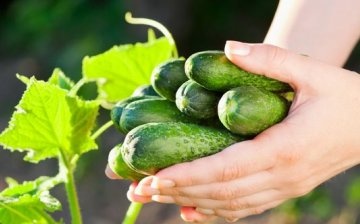
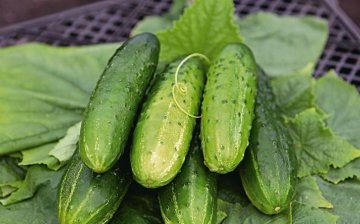
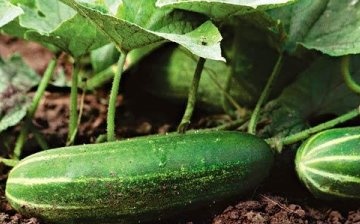






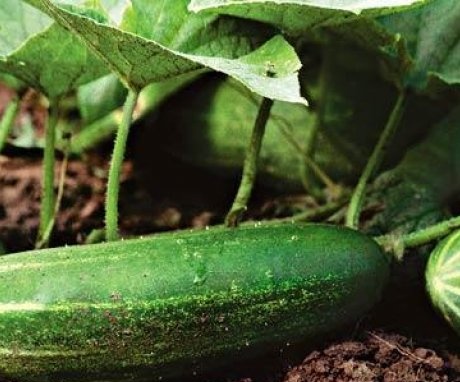
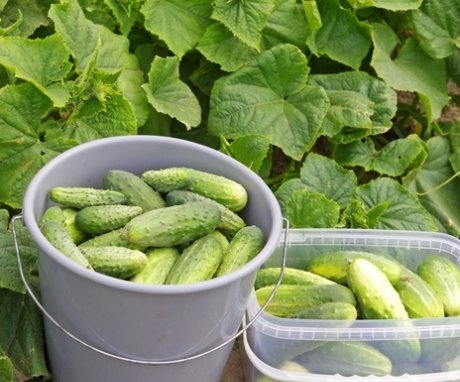
And I really enjoyed growing the "Chinese miracle" for the last two years. Yes, it is not suitable for salt, but it tastes chic, resistant to diseases, and the yield is high, I tie it up on a net and it bears fruit straight in clusters of 5-8 cucumbers next to each other, each 25-40 cm long, enough to feed the whole family!